4D simulation of explosive eruption dynamics at Vesuvius
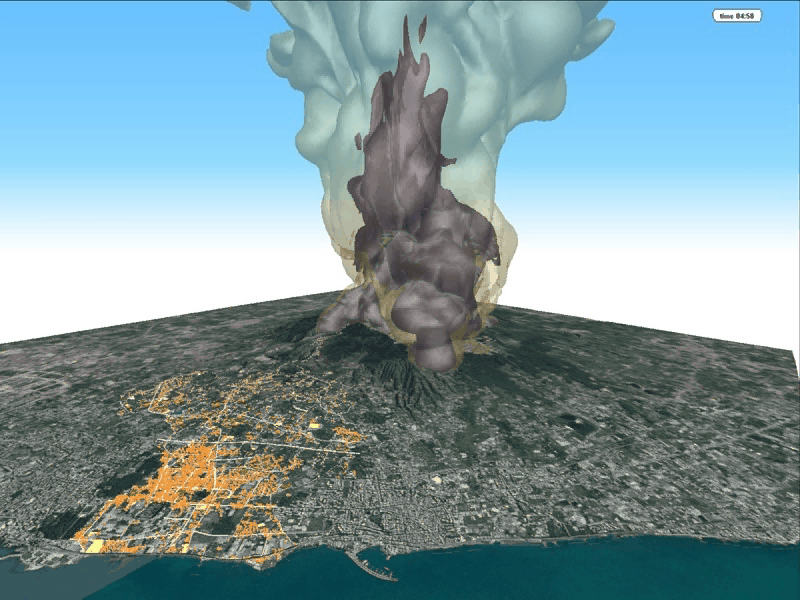
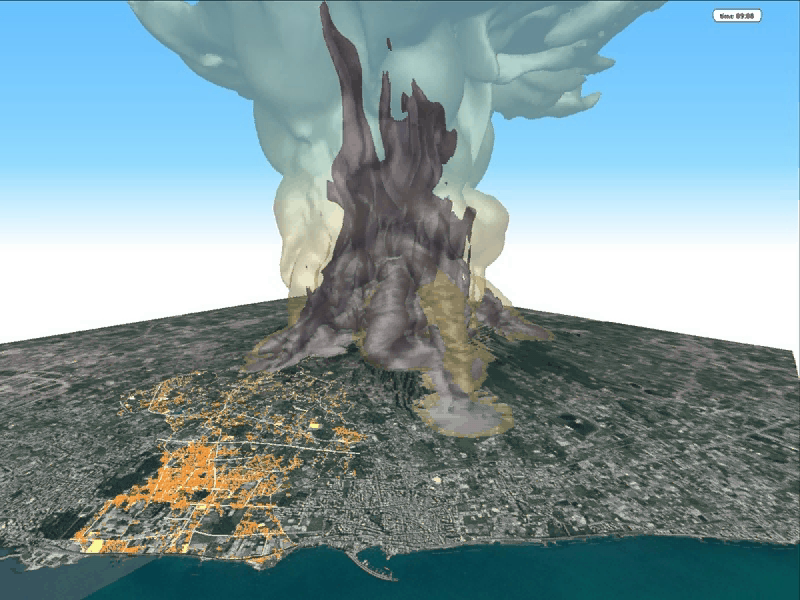
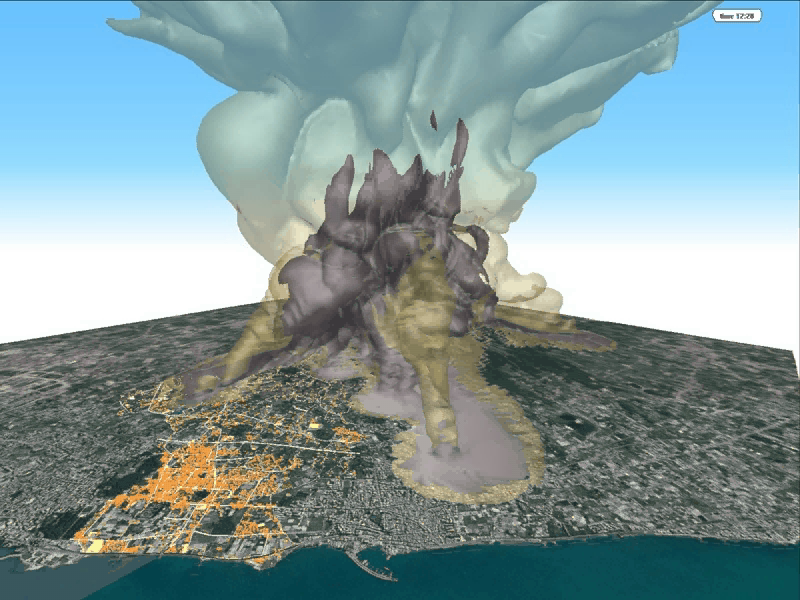
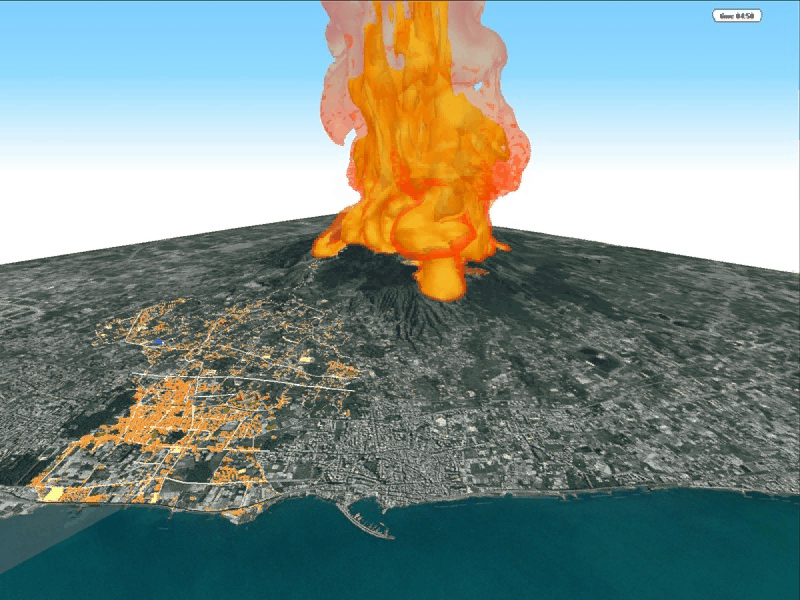
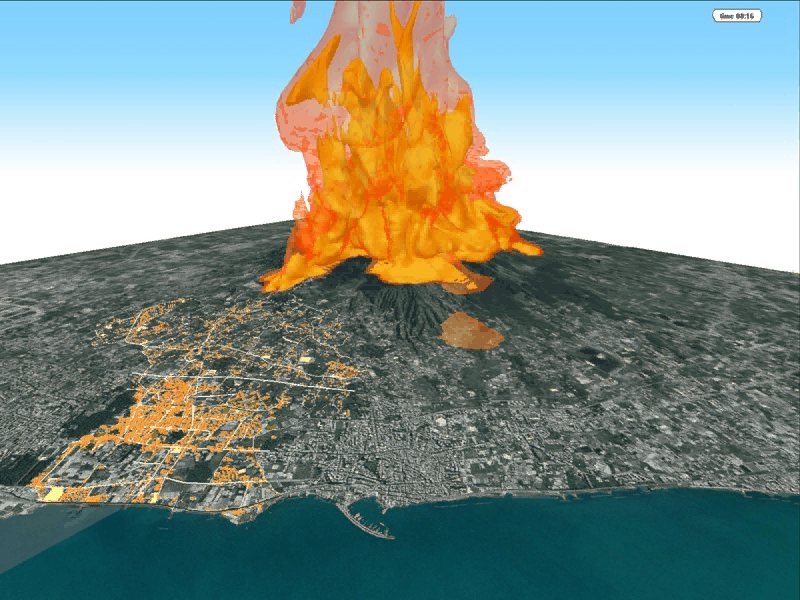
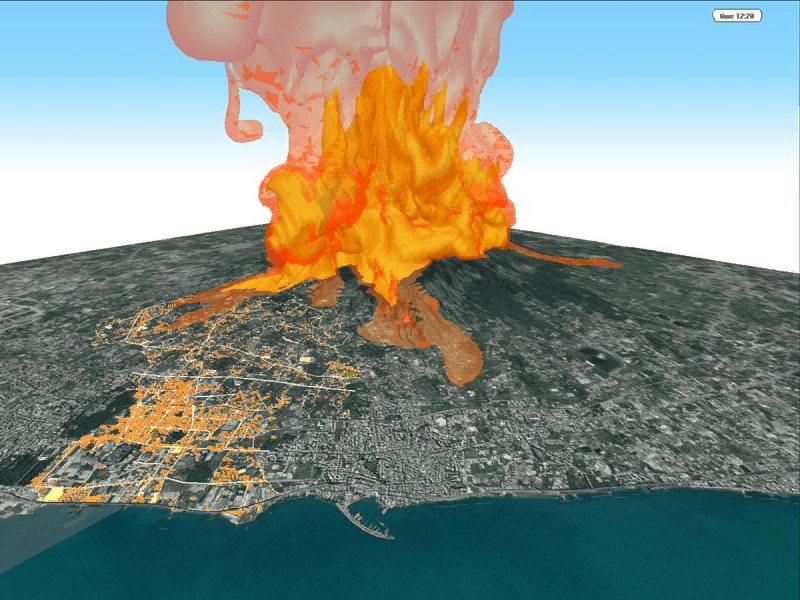
Three-dimensional simulation of a partial column collapse scenario at Vesuvius. The input conditions of the multiphase flow model are representative of a Sub-Plinian eruption with a mass flow rate of 8 x 10’7 kg/s. Two particle classes of 30 and 500 microns were modeled to represent the ejected pyroclasts. The two isosurfaces represent the total pyroclast concentrations in the atmosphere of 10 -4 and 10 -6 (upper sequence) and the gas temperatures of 100°C and 350°C (lower sequence), at 300, 500 and 750s from the beginning of the collapse. Simulation results were superimposed on a 10 m-resolution Digital Elevation Model (DEM) of the Red Zone that, in turn, was covered by aerial ortho-photos. Urbanization and population data, in the form of spatial distributions, were then added for one of the municipalities of the Red Zone area (Ercolano).
Neri A., T. Esposti Ongaro, G. Menconi, M. De’ Michieli Vitturi, C. Cavazzoni, G. Erbacci, P.J. Baxter (2007). 4D simulation of esplosive eruption dynamics at Vesuvius, Geophysical Research Letters, 34, doi:10.1029/2006GL028597.
Summary
We applied a new simulation model, based on multiphase transport laws, to describe the 4D (3D spatial coordinates plus time) dynamics of explosive eruptions. Numerical experiments, carried out on a parallel supercomputer, describe the collapse of the volcanic eruption column and the propagation of pyroclastic density currents (PDCs), for selected medium scale (sub-Plinian) eruptive scenarios at Vesuvius, Italy. Simulations provide crucial insights into the effects of the generation mechanism of the flows – partial collapse vs boiling-over – on their evolution and hazard potential, the unstable dynamics of the fountain, and the influence of Mount Somma on the propagation of PDCs into the circum-Vesuvian area, one of the world’s most hazardous volcanic settings. Results also show that it is possible to characterize the volcanic column behavior in terms of percentage of the mass of pyroclasts collapsed to the ground and how this parameter strongly influences the dynamics and hazard of the associated PDCs.
Animations (© Agu – INGV)
- Large-scale dynamics of the partial column collapse scenario at Vesuvius
- Dynamics of the fountain of the partial column collapse scenario
- Large-scale dynamics of the total column collapse scenario (boiling-over) at Vesuvius
- 4D immersive animation produced by using a simulated partial column collapse scenario characterized by a mass flow-rate of 8 × 107 kg/s


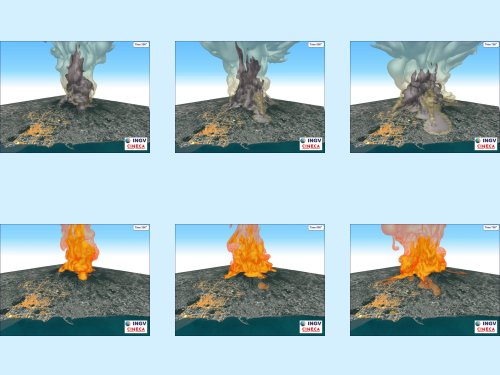
Devi effettuare l'accesso per postare un commento.